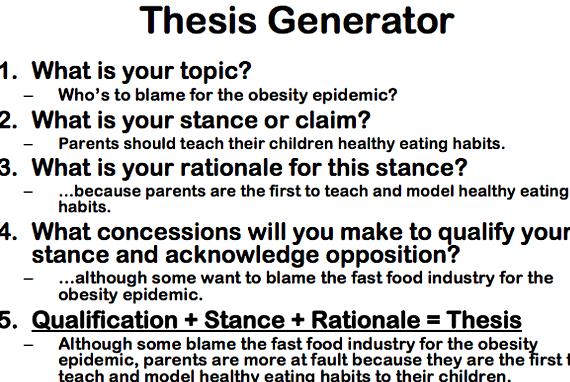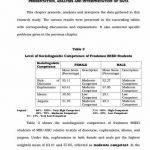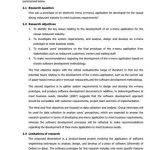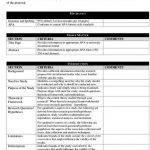This page is brought to you by the OWL at Purdue (https://owl.english.purdue.edu/). When printing this page, you must include the entire legal notice at bottom.
Four Main Components for Effective Outlines
This resource describes why outlines are useful, what types of outlines exist, suggestions for developing effective outlines, and how outlines can be used as an invention strategy for writing.
Contributors: Elyssa Tardiff, Allen Brizee
Last Edited: 2013-03-01 09:20:56
Ideally, you should follow the four suggestions presented here to create an effective outline. When creating a topic outline, follow these two rules for capitalization: For first-level heads, present the information using all upper-case letters; and for secondary and tertiary items, use upper and lower-case letters. The examples are taken from the Sample Outline handout.
ParallelismHow do I accomplish this?
Each heading and subheading should preserve parallel structure. If the first heading is a verb, the second heading should be a verb. Example:
- CHOOSE DESIRED COLLEGES
- PREPARE APPLICATION
(“Choose” and “Prepare” are both verbs. The present tense of the verb is usually the preferred form for an outline.)
CoordinationHow do I accomplish this?
All the information contained in Heading 1 should have the same significance as the information contained in Heading 2. The same goes for the subheadings (which should be less significant than the headings). Example:
- VISIT AND EVALUATE COLLEGE CAMPUSES
- VISIT AND EVALUATE COLLEGE WEBSITES
- Note important statistics
- Look for interesting classes
(Campus and Web sites visits are equally significant. They are part of the main tasks you would need to do. Finding statistics and classes found on college Web sites are parts of the process involved in carrying out the main heading topics.)
SubordinationHow do I accomplish this?
The information in the headings should be more general, while the information in the subheadings should be more specific. Example:
- DESCRIBE AN INFLUENTIAL PERSON IN YOUR LIFE
- Favorite high school teacher
- Grandparent
(A favorite teacher and grandparent are specific examples from the generalized category of influential people in your life.)
DivisionHow do I accomplish this?
Each heading should be divided into 2 or more parts. Example:
- COMPILE RÉSUMÉ
- List relevant coursework
- List work experience
- List volunteer experience
(The heading “Compile Résumé” is divided into 3 parts.)
Technically, there is no limit to the number of subdivisions for your headings; however, if you seem to have a lot, it may be useful to see if some of the parts can be combined.
1995-2016 by The Writing Lab The OWL at Purdue and Purdue University. All rights reserved. This material may not be published, reproduced, broadcast, rewritten, or redistributed without permission. Use of this site constitutes acceptance of our terms and conditions of fair use .
Many writers use an outline to help them think through the various stages of the writing process. An outline is a kind of graphic scheme of the organization of your paper. It indicates the main arguments for your thesis as well as the subtopics under each main point.

Outlines range from an informal use of indenting and graphics (such as &-, *, +) to a formal use of Roman numerals and letters. Regardless of the degree of formality, however, the function of an outline is to help you consider the most effective way to say what you want to say.
Outlines usually grow out of working plans for papers. For shorter, less complex papers, a few informal notes jotted down may be enough. But longer papers are too big to organize mentally; you generally need a more systematic plan to organize the various parts of the paper. Preparing an outline will help you think over your notes, consider them from several perspectives, and devise/revise an organizational plan appropriate to your topic, audience, and assignment. An outline that accompanies the final draft of a paper can also function as a table of contents for the reader.
When you think of outlines, you usually think of an organizational plan to help you draft a paper, but you can outline at any one of the several stages of the writing process. At each stage, the outline serves a different function and helps you answer different writing questions:
USING OUTLINES IN RESEARCH
While you are researching a topic, you can make a tentative outline–a plan for your paper based on what you are learning from your research. This kind of outline helps you answer the questions: What do I know a lot about already? What do I need to research more?
Here is an example of a tentative outline a student used to begin doing research for an essay comparing three different political theories: neo-Marxism, pluralism, and elitism. The writer already knew about two of the theories, but needed more information about the third.
PRE-WRITING WITH OUTLINES
During pre-writing, you can make a working outline–an outline that guides you in your drafting. It helps you answer the question: How am I going to present my information, given my thesis, my assignment and my audience?
The student who wrote the tentative outline above also wrote the one below before beginning her essay. She wanted to describe the three political theories and then compare them by using each to analyze the government of a particular country, arguing that neo-Marxism is the most useful theory. Her working outline isn’t very formal, but it fulfills the functions of a good outline.
- It supports the thesis.
- It establishes the order and relationship of the main points.
- It clarifies the relationship between the major and minor points.
Here’s what the student’s second outline looked like:
Your job as the writer is to think through the relationship between your ideas. For example, is one idea similar to or different from another? Is one a cause of another? An effect? An example? Is one idea the solution to another? Do two points represent different categories of a larger idea? In other words, do your ideas fall into one of the conventional approaches to thinking about an issue: cause-effect, problem-solution, comparison-contrast, definition, classification? You can use these standard approaches to help you think through your ideas and come up with a logical plan. That plan then becomes your outline.
While drafting, you can make a draft or descriptive outline–an outline that is based on your draft. It describes each of your paragraphs so that you can critique your organization. It helps you answer the questions: Does my draft flow logically from point to point? Have I discussed similar ideas in the same section or do I seem to jump around?
This is a draft outline the above-mentioned student made after writing the first draft of her paper. She summarized the draft, paragraph by paragraph, and then took a look at what the outline revealed.
Paragraph 1 — General introduction to political theories, Thesis: neo-Marxism most useful
Paragraph 2 — Description of neo-Marxism
Paragraph 3 — Description of pluralism
Paragraph 4 — Coalitions of interest groups
Paragraph 5 — Description of elitism
Paragraph 6 — Pluralist analysis of U.S.
Paragraph 7 — Neo-Marxist analysis of U.S.
Paragraph 8 — Strengths of neo-Marxist analysis, Weaknesses of neo-Marxism and Pluralism
Paragraph 9 — Weaknesses of elitism
Paragraph 10 — Conclusion
She noticed that the descriptions of neo-Marxism and elitism were each in a single paragraph, but the description of pluralism took two paragraphs. She decided to be consistent by combining paragraphs 3 and 4. She also noticed that the second half of the paper seemed to jump around from theory to theory, presenting each theory’s analysis and then each theory’s weaknesses. She decided to put the pluralist analysis of the U.S. and the weaknesses of the analysis together in paragraph 6, the elitist analysis and its weaknesses into a paragraph together, and then devote two paragraphs to the neo-Marxist analysis and its strengths and weaknesses.
MAKING AN OUTLINE TO HAND IN
Finally, you may also be required to write a formal outline–an outline that serves as a guide to your paper for your reader. If you haven’t already been making formal outlines, this outline will be a formal version of your previous notes; it lays out your main points and subpoints for your reader. Generally, this kind of outline uses conventions of formal outlining: Roman numerals, letters and indentations. Sometimes this sort of outline can be produced after you have written your essay.
Formal outlines can be written in two ways. In topic outlines, the ideas are expressed in parallel phrases (in other words, they are expressed in the same grammatical form–as noun phrases, as verb phrases, etc.). Topic outlines have the advantage of being brief. In sentence outlines, on the other hand, the ideas are expressed in complete, though not necessarily parallel, sentences. Sentence outlines give the reader a clearer idea of what you will argue.
Regardless of the kind of formal outline you choose, convention states that you begin with a statement of your thesis and indicate increasing levels of support in this order: I. A. 1. a. (1), (a). In scientific papers, however, a decimal system is also commonly used. A topic outline follows:
Thesis: Among the pluralist, elitist, and neo-Marxist political theories, neo-Marxism provides the most powerful analysis of the current political scene.
Notice in a formal outline, whenever a point is subdivided, there are at least two subpoints. Logic and convention state that when you divide a point, you can divide it into no fewer than two subpoints.
Remember, depending on how your research or writing is going, you may need to make use of any or all of the outlines described in this article.
Produced by Writing Tutorial Services, Indiana University, Bloomington, IN
wts/shtml_navs/iub.jpg” />
Writing Tutorial Services
Center for Innovative Teaching and Learning
Wells Library Learning Commons, 1320 E. Tenth St. Bloomington, IN 47405
Phone: (812) 855-6738
Comments




 Analysis and interpretation of data in thesis writing
Analysis and interpretation of data in thesis writing Master thesis proposal literature review
Master thesis proposal literature review Research objectives master thesis proposal
Research objectives master thesis proposal Assessment form master thesis proposal
Assessment form master thesis proposal Banality of evil thesis proposal
Banality of evil thesis proposal






